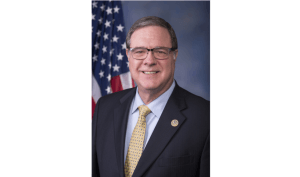The featured photo is of the
2011 Washington State Redistricting Commission.
There are two stories that come out of any review of Washington State’s redistricting process.
One is that it is imminently balanced, built to develop a map that is as evenly split, as 50-50 of a map as can be reasonably accomplished.
The second is that Slade Gorton is the Godfather of this process, one he laid the moral argument for in the Legislature; created the legal underpinnings for as Attorney General; helped influence as a U.S. Senator; and for which he served as a commissioner in 2011-2012.

The Morning Wire: Keeping you informed on politics, policies, and personalities of Washington State.
There is arguably no Washingtonian who has had more influence on the way the lines are drawn in this state than Gorton. And, while Gorton is a spry 91-year-old, it’s likely this model will long outlive him.
In 1962, more voters cast ballots for Republicans than Democrats–yet Democrats held more seats in the legislature.
His argument on redistricting, made during the landmark 1963 legislative session and built upon the U.S. Supreme Court in the 1962 Baker decision, was “one person, one vote.”
Gorton drafted a paragraph for then-Governor Dan Evans’s inaugural address in 1964 that built on this logic and which was given before a joint session of the Legislature.
“I now urge the Legislature to pass promptly a legislative redistricting bill which will obey the mandates of the state and federal constitutions, provide equitable representation for all areas of the state and ensure that the party which wins a majority of the votes will win a majority of the seats in the Legislature,”
Driving home this point, that districts should be drawn with an equal proportion of the population, came Gorton’s 1970 opinion as Attorney General.
It was this opinion that built the legal framework for future redistricting efforts that backed legislators into a corner. The political infighting that had occurred for multiple generations of legislators, where populations could be shifted so that one district might have five times as many voters as another, was a practice that Gorton would see put to an end during his time in office.
Gorton’s thought leadership on the topic, both during his legislative days in the 1960s and his AG days in the 1970s, saw to it.
The 1983 constitutional amendment, approved by the Legislature and the voters, the amendment which created our current redistricting commission, stands on the shoulders of Gorton’s political and legal leadership.
Put into a broader context, Gorton is–for this and other reasons–one of the most important civic figures of the last half-century. Gorton is the Godfather of how Washington State draws its lines when it comes to the legislative and congressional districts.
However, to think of Gorton as a civic figure alone is to recognize only a part of his legacy.
Gorton is also one of the most important partisan figures of the last half-century.
His legacy on redistricting was to use moral, logical, and legal arguments to the benefit of not only the people of Washington, but also his party.
As Gorton’s biographer, John C. Hughes, put it in his 2011 book “Slade Gorton: A Half Century in Politics,” Gorton was also always looking for a partisan advantage within the constraints of what was legal and appropriate for such an important process.
“The goal was to create enough strategically placed Republican swing districts to give the party a fighting chance in lean years and a majority in good ones. No mean feat. One squiggly line bisecting a neighborhood could spell defeat or victory. ” (Pg. 54)
While this goal was within the context of the 1963 redistricting effort, it was one that Gorton would employ in formal and informal ways across multiple redistricting efforts.
Dean Foster, who served as Chief Clerk of the House and Chief of Staff for Governor Booth Gardner in the 1980s, was a Democratic staffer during those redistricting efforts of the 1960s.
In Hughes’s book, Foster is quoted comparing then-Democratic Senate Majority Leader Bob Grieve to then-Republican House member Slade Gorton.
“Slade and Bob understood the numbers equally well… Slade knew he couldn’t write enough Republican districts to win a majority. It all depended on the swing districts.” (Pg. 57)
Foster would later serve on the 2011-2012 Redistricting Commission with Gorton, where he would again face off with Gorton and represent his party’s interests. If anyone could measure the efficacy of Gorton’s efforts over a half century, Foster might be the one.
To be clear, the approach towards gaining partisan advantage within the constraints of the law isn’t unique to Gorton. Many others in Washington State history have tried to play the game.
But Gorton played it better. He wrote the rules, knew the numbers, and ultimately had more influence drawing the lines that underpin Washington State politics than anyone else in a half-century.
And it’s a legacy that continues to shape the 2019 Washington State Legislature.
This article is part of a series titled “Redistricting Washington State: How the lines are drawn,” in which we explore the history, implications, and details of the state’s once-a-decade redistricting process. Read more about the series here.
Your support matters.
Public service journalism is important today as ever. If you get something from our coverage, please consider making a donation to support our work. Thanks for reading our stuff.










